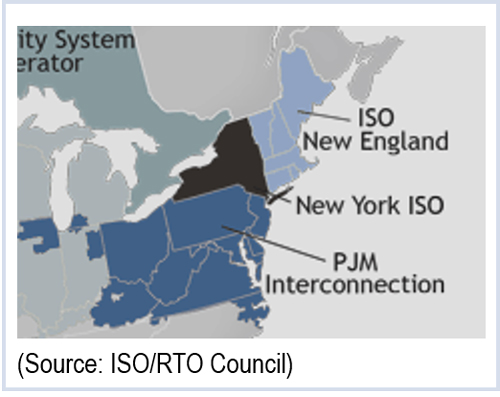By William Opalka
The Federal Energy Regulatory Commission on Thursday conditionally accepted the interregional transmission planning and cost allocation proposals by ISO-NE, NYISO and PJM (ER13-1957 et al), completing the commission’s initial review of all of the interregional compliance filings required under Order 1000.

FERC said the filing conformed to its requirement that interregional cost allocation methods address regional reliability and economic needs as well as transmission needs driven by public policy requirements.
The commission previously ruled that an avoided-cost method was not permissible as the sole cost allocation method for regional transmission projects because it would “not allocate costs in a manner that is at least roughly commensurate with estimated benefits because it does not adequately assess the potential benefits provided by that transmission facility.”
However, it concluded that an avoided-cost only method is permissible for interregional transmission.
“We find that the interplay between the regional transmission planning and interregional coordination requirements of Order No. 1000 address, at the interregional level, the commission’s concerns regarding use of the avoided-cost only method at the regional level,” it wrote.
The commission rejected avoided-cost-only allocation for regional projects because a regional facility that resulted in a more cost-effective transmission solution than what was included in the roll-up of local transmission plans would not be eligible for regional cost allocation if there was no transmission facility in the local transmission plans that it would displace.
In contrast, the commission said it believed “there will be regional transmission facilities identified in the regional transmission planning process that are needed to meet transmission needs driven by reliability, economic and/or public policy requirements that potential interregional transmission facilities may displace.”
The filing updated the Northeastern Protocol, which the three regions adopted in 2004 to facilitate the exchange of information and establish a committee structure for the coordination of interregional planning. The Joint ISO/RTO Planning Committee, comprised of staff representatives from the regions, will be charged with evaluating interregional transmission solutions with input from the Interregional Planning Stakeholder Advisory Committee, which is open to stakeholders.
The commission required the regions to make only minor ministerial changes in compliance filings due in 60 days.

